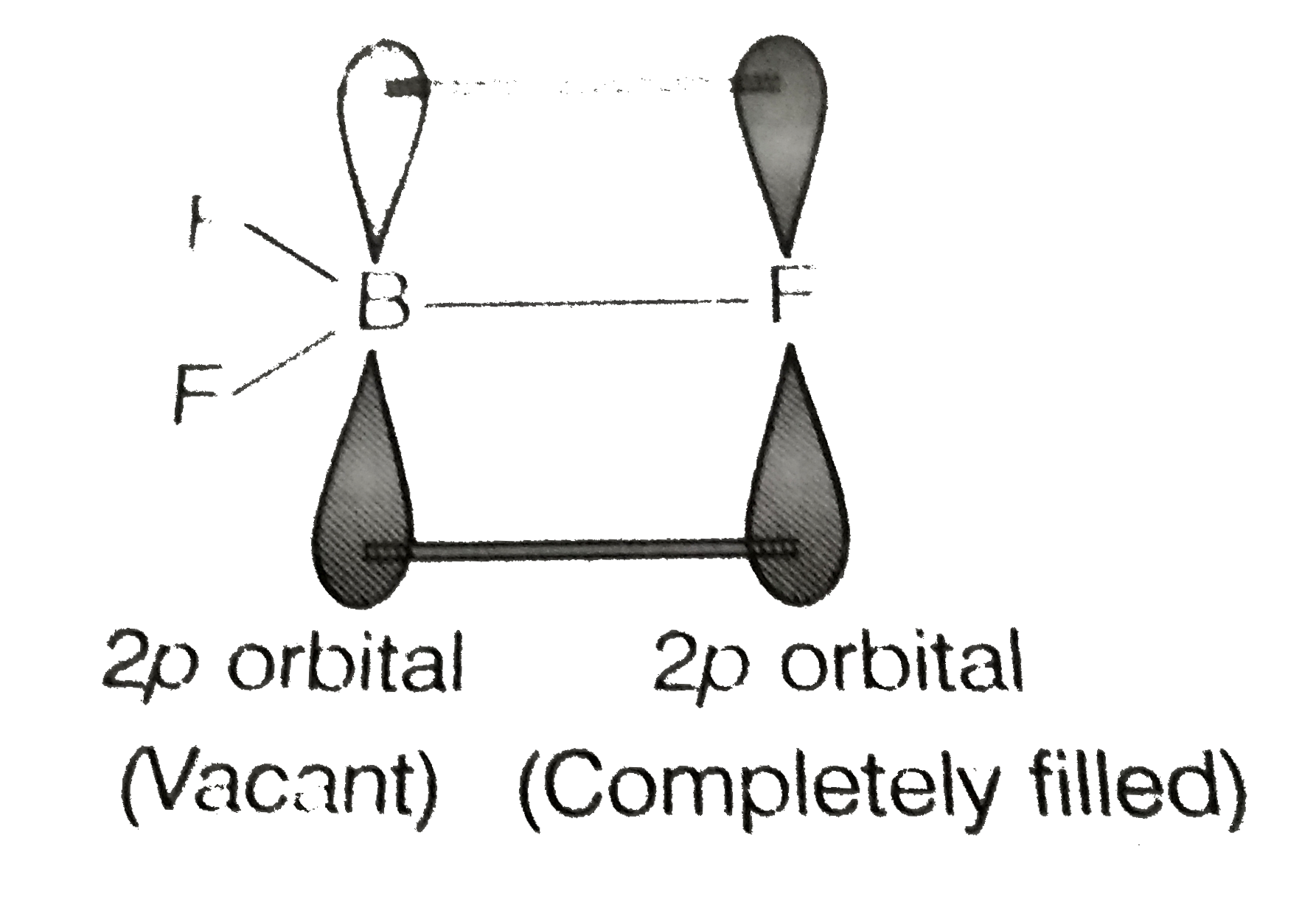Account for the following observations
(a) AlCl3 is a Lewis acid
(b) Though fluorine is more electronegative than chlorine yet BF3 is a weaker Lewis acid than BCI3
(c) PbO2 is a stronger oxidising agent than SnO2
(d) The +1 oxidation state of thallium is more stable than its +3 state.
(a) In AlCl3,Al has only six electron in its valence shell. It is an electron deficient species. Therefore, it acts as a Lewis acid (electron acceptor)
(b) In BF3 boron has a vacant 2p-orbital and fluorine has one 2p-completely filled unutilised orbital. Both of these orbitals belong to same energy level therefore, they can overlap efficitively and form pπ−pπ bond. This type of bond formation is known as back bonding.
While back bonding is not possible in BCl3, because there is no effective overlapping between 2p-orbital of boron and 3p-orbital of chlorine. Therefore, electron deficiency of B is higher in BCl3 than that of BF3. That's why BF3 is a weaker Lewis acid than BCl3

(c) In PbO2andSnO2, both lead and tin are present in +4 oxidation state. But due to stronger inert pair effect, Pb2+ ion is more stable than Sn2+ ion. In other words, Pb4+ ions i.e., PbO4 is more easily reduced to Pb2+ ions than Sn4+ ions reduced to Sn2+ ions. Thus, PbO2 acts as a stronger oxidising agent than SnO2
(d) Tl+ is more stable than Tl3+ because of inert pair effect.
Topper's Solved these Questions
- THE P-BLOCK ELEMENTSBook:NCERT EXEMPLAR ENGLISHChapter:THE P-BLOCK ELEMENTSExercise:Assertion and Reason
Explore 2 Videos
- STRUCTURE OF ATOMBook:NCERT EXEMPLAR ENGLISHChapter:STRUCTURE OF ATOMExercise:All Questions
Explore 55 Videos
- THE S-BLOCK ELEMENTS Book:NCERT EXEMPLAR ENGLISHChapter:THE S-BLOCK ELEMENTS Exercise:Long Answer Type Questions
Explore 8 Videos
Similar Questions
TlCl3 is more stable than TlCl.
+1 oxidation state of thallium us more stable than +3.
View SolutionExplain giving reasons the following:
BF3 is a weaker Lewis acid than BCl3
View SolutionAssertion: BF3 is weaker lewisi acid than BCl3.
Reason: BF3 is less electron deficient thann BCl3.
View SolutionFluorine is more electronegative than chlorine but p-fluorobenzoic acid is a weaker acid than p-chlorobenzoic acid. Explain.
View SolutionExplain, why is the +2 oxidation state of lead more stable than the +2 oxidation state of tin.
View SolutionAssertion BF3 has greater dipole momnet than H2S
Reasoning Fluorine is more electronegative than sulphur .
View SolutionAssertion BF3 is a weaker Lewis acid than BCI3
Reasoning In BF3 molecule, back bonding (pπ−pπ) is stronger than in BCI3 .
View SolutionIn which of the following elements +3 oxidation state is more stable than +5?
View SolutionThe +1 oxidation state is more stable than +3 oxidation state for thallium. Give reason.
View SolutionThe +1 oxidation state is more stable than +3 oxidation state for thallium. Give reason.
View Solution
